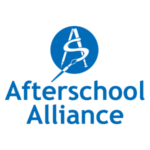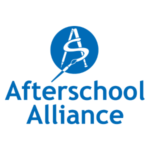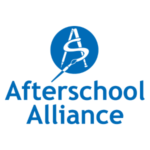Research
- General Research (47)
- High School Research (11)
Based on both statistical analysis of employment data and extensive research involving over 300 faculty members from two and four year postsecondary institutions, managers, and high school educators, the American Diploma Project (ADP) benchmarks concretely define the English and math that graduates must master to succeed in credit-bearing college courses and high-performance, high-growth jobs. Key findings: employers’ and colleges’ academic demands for high school graduates have converged, yet states’ current high-school exit expectations fall well short of those demands.
Education Trust and partners Achieve and Fordham Foundation (2004).
Although much of the funding and programming for afterschool targets younger children, there are myriad advantages for older youth participation in afterschool. This brief examines the growing need for afterschool programming for teens.
This statewide effort began in 2002. The program awards five one-year grants to programs that provide opportunities to underachieving high school-aged youth in the state. This WestEd report evaluates the program’s initial years of implementation. (WestEd, 2006).
With a job market that requires nearly all workers to have a high school diploma, America faces a huge challenge with the dropout crisis. This brief examines the potential role high school afterschool could play in decreasing dropout rates, tackling the achievement gap, and keeping kids on track towards successful futures.
Draws on findings from four studies by MDRC, a nonpartisan, nonprofit research firm.
Findings from these evaluations suggest that positive change is associated with a combination of instructional improvement and structural changes in school organization and class schedules. The brief is organized according to five cross-cutting challenges that high schools face in seeking to influence student outcomes: assisting students who enter high school with poor academic skills, improving instructional content and practice, creating a personalized and orderly learning environment, providing work-based learning opportunities and preparing students for the world beyond high school, and stimulating change in overstressed high schools.
Over one million students who enter ninth grade each year fail to graduate with their peers four years later because they drop out of school. Seven thousand students drop out of school every day, and each year roughly 1.2 million students fail to graduate from high school. More than half of these students are from minority groups. After school programs are a proven way to address the issues and risk factors that lead to dropout and provide a path to graduation and beyond.
This report, developed by the National Center for Education Statistics, contains statistics that address important aspects of the lives of youth, including family, schooling, work, community, and health. The report focuses on American youth and young adults 14 to 24 years old, and presents trends in various social contexts that may relate to youth education and learning.
The past year presented the afterschool community with many obstacles, most notably the economic crisis, but also many opportunities for growth. The year 2008 saw the celebration of ten years of 21st CCLC, one of the largest Lights On Afterschool rallies ever was held, and the Afterschool Alliance published the stories of so many whose lives have been transformed by afterschool in America’s Afterschool Storybook.
In 2007, funding for 21st Century Community Learning Centers increased for the first time since 2002. New research and polls show enduring and far-reaching support. More community leaders and policy makers are pledging their support for afterschool, and new dedicated state level funding streams are cropping up across the country. These positive developments, and more, as well as critical challenges that remain, are discussed in “2007 Afterschool Year in Review.” (January 2008)
This study finds that elementary students who were randomly assigned to attend the 21st Century Community Learning Centers after-school program were more likely to feel safe after school, no more likely to have higher academic achievement, no less likely to be in self-care, more likely to engage in some negative behaviors, and experience mixed effects on developmental outcomes relative to students who were not randomly assigned to attend the centers.
Released in June, Uncertain Times 2009 finds that just as children in their communities need more help, afterschool program leaders across the country say they are being forced to increase fees and reduce staffing, activities and hours to cope with budget cuts and rising costs. Nearly all respondents to a survey of afterschool programs (95 percent) say the recession is affecting their communities, with 60 percent seeing more kids going hungry or families struggling to provide food for children, and half seeing increased homelessness. Yet afterschool programs are unable to provide as much help as children need because their budgets are down. Eighty-six percent of respondents say children in their communities need afterschool care and are unable to access it.
Funding Insecurity Puts Afterschool Programs at Risk – An August-September 2006 survey of more than 2000 afterschool programs examining issues related to funding and accessibility. Includes state level data where available.











